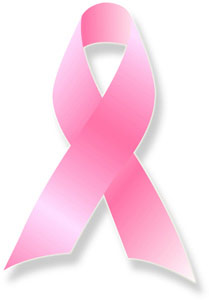Tamoxifen Found to Prevent Breast Cancer Deaths in At-Risk Women

Giving the drug Tamoxifen to women who are at risk for breast cancer can reduce cancer deaths and save money, according to a new study.
The results, based on a mathematical model, show Tamoxifen can prevent 29 breast cancer cases and nine breast cancer deaths for every 1,000 women treated.
About 34 to 35 women would need to be treated with Tamoxifen to prevent one case of breast cancer, and 102 women would need to be treated to prevent one death, the researchers say.
Unlike many treatments, which benefit patients but come with a high price tag, using this drug would save money. For every 1,000 women treated, Tamoxifen would save $47,580, the researchers say. The cost savings arise because the drug prevents breast cancer cases from occurring in the first place.
The problem with Tamoxifen is that it comes with some serious side effects. It increases the risk of stroke, blood clots and endometrial cancer, and can induce menopause, or cause hot flashes in post-menopausal women. So, even though the FDA has approved its use to both prevent and treat breast cancer, doctors primarily prescribe it to treat breast-cancer patients.
The model included only women who would be at a reduced risk for these side effects; that is, women under 55 who have already gone through menopause and are at risk for developing breast cancer.
"There's a group of women who potentially could benefit from taking Tamoxifen," said study researcher Dr. Peter Alperin, of Archimedes Inc. in San Francisco, a company that creates computer models to answer questions related to health care. "These women should definitely talk with their physicians to understand what it means for them."
Sign up for the Live Science daily newsletter now
Get the world’s most fascinating discoveries delivered straight to your inbox.
Tamoixfen benefits
Tamoxifen is currently used to treat certain cases of breast cancer.
In addition, if women are at high risk for breast cancer — because it runs in their families, for instance — studies have shown that taking Tamoxifen can reduce a women's risk of developing the disease by 50 percent. But because of the drug's side effects, only about 20 to 40 percent of eligible women take it, said study researcher Joyce Noah-Vanhoucke, also of Archimedes.
Past studies have indicated that Tamoxifen, used prophylactically to prevent breast cancer, is not cost-effective. But these studies did not take into account fairly recent information that says the effects of Tamoxifen can persist for 10 years after treatment. The drug presumably has no side effects after a woman stops taking it.
The researchers used a model to simulate a virtual clinical trial comparing Tamoxifen treatment with no treatment in post-menopausal women under 55. It included information from four other cancer trials. They modeled how Tamoxifen would impact women's breast cancer risk 10 years after they had been treated.
Women in the virtual trial whose five-year risk of breast cancer was 1.66 benefited the most from Tamoxifen. An example of an individual in this group would be a post-menopausal woman in her early 50s who started menstruating early and never had children, or who had children later in life, Noah-Vanhoucke said.
In a perfect world, the researchers would have conducted a real clinical trial, Alperin said. But many clinical trials never get done because they're too expensive, take too long, or can't enroll enough participants, he said.
Information for patients
"Studies like this are really helpful to put some numbers around both the benefits and the risk" of treatment, said Dr. Thomas J. Smith, a professor of medicine at Virginia Commonwealth University's Massey Cancer Center, who was not involved in the current study. The work "shows that Tamoxifen helps prevent some breast cancer deaths, and does it at a cost that society can afford."
But others aren't convinced by the results. Dr. Alfred Neugut, a professor of medicine and epidemiology at Columbia University, said he still would not prescribe Tamoxifen to prevent breast cancer.
"These are powerful drugs, and you're giving them for prevention," said Neugut, who was not involved in the study. "Usually when you think of prevention, you think of taking a vitamin."
Neugut notes that the findings apply to only a small subset of women. About 15 percent of women are post-menopausal and younger than 55, the researchers say. Of that 15 percent, 10 percent have a five-year breast cancer risk of 1.66.
Neugut said he doesn't know if using the drug for breast cancer prevention is "something people are going to want to do on a very wide scale."
But if the risk is great enough, for example, if a woman has the BRCA1 gene, which has been strongly tied with developing breast cancer, then the risk may be warranted, he said.
The study is published online today (March 14) in the journal Cancer.
Pass it on: Tamoxifen can prevent breast cancer cases and deaths. If given to the right population of women, it saves money and minimizes side effects.
Follow MyHealthNewsDaily staff writer Rachael Rettner on Twitter @RachaelRettner.
This story was provided by MyHealthNewsDaily, a sister site to LiveScience.

Rachael is a Live Science contributor, and was a former channel editor and senior writer for Live Science between 2010 and 2022. She has a master's degree in journalism from New York University's Science, Health and Environmental Reporting Program. She also holds a B.S. in molecular biology and an M.S. in biology from the University of California, San Diego. Her work has appeared in Scienceline, The Washington Post and Scientific American.









